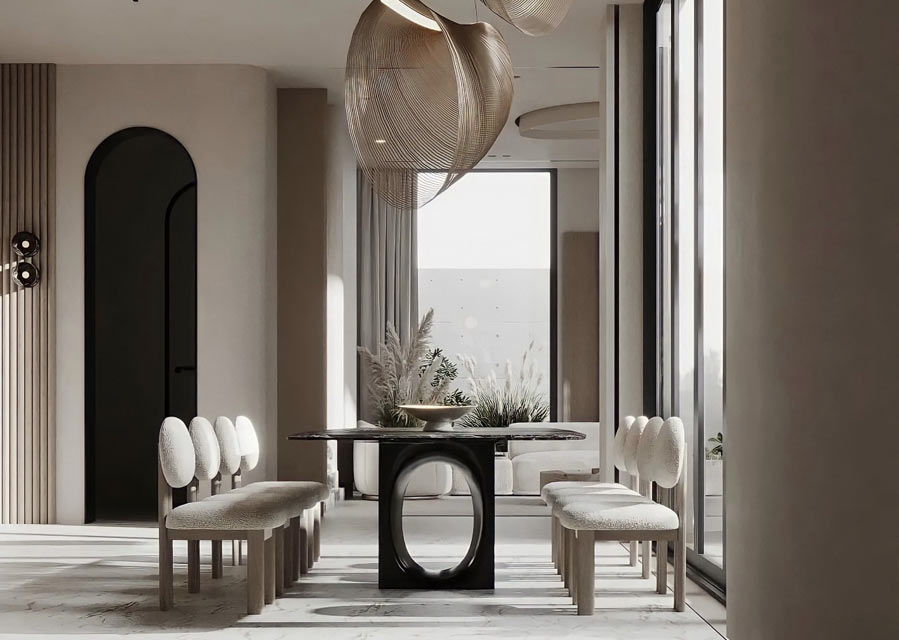Psychological Interior Design: How Your Space Impacts Your Mind
Written by Kateryna, founder of Kate’s Interiors — a Beverly Hills-based interior designer with over 10 years of experience in wellness-centered and emotionally intelligent design.
When designing a space, we often focus on aesthetics, function, and comfort. But what if we could take things a step further? What if the design of our surroundings could directly enhance our mental and emotional well-being? That’s where psychological interior design comes in, a concept developed by leading environmental psychologist Dr. Sally Augustin.
In this post, we explore how psychological interior design works, why it’s important for your health, and how you can apply Dr. Augustin’s principles to create healing, productive spaces.
What is Psychological Interior Design?
Psychological interior design focuses on the mental and emotional impact of the spaces we inhabit. Dr. Sally Augustin, a well-known expert in environmental psychology, has done extensive work on how the physical environment can influence human emotions, productivity, and overall well-being.
Through the principles of environmental psychology, she advocates for spaces that don’t just look good but feel good. This approach considers the psychological triggers embedded in color, layout, textures, lighting, and natural elements.
Dr. Sally Augustin’s work on psychological interior design focuses on how environments shape our emotions and behavior. You can learn more about her impactful research through her publications and articles on Psychology Today.
Key Principles of Psychological Interior Design
-
Emotional Zoning:
Not all spaces should be designed for the same purpose. Emotional zoning means designing rooms or areas that cater to specific emotional needs. Calming colors and soft textures in a bedroom promote relaxation, while energizing hues in a home office can increase productivity. -
Subconscious Triggers:
Subtle elements like color, shape, and layout can trigger emotional responses. Dr. Augustin’s research shows that the design of a space can either create feelings of calm or increase anxiety, depending on how it’s arranged. -
Sensory Design:
Incorporating sensory cues like lighting, texture, smells, and even sound can help regulate your nervous system. Using natural materials such as wood or stone, or incorporating essential oils into the space, can promote a sense of grounding and calm. -
Human-Centered Design:
This approach prioritizes the human experience. Whether it’s an office, home, or wellness center, a psychologically informed design helps individuals feel connected, supported, and comfortable in their environment.
How to Apply Psychological Interior Design to Your Space
-
Start with Color Psychology:
Use calming shades like soft blues and greens in areas for rest, and energizing tones like oranges or yellows in creative zones. -
Incorporate Natural Elements:
Indoor plants, wooden furniture, natural light, and stone finishes all help reduce stress and support focus — key elements of biophilic design. -
Consider Lighting and Layout:
Use warm lighting in rest areas and brighter light in task zones. Layouts should flow naturally to reduce mental fatigue and visual clutter. -
Choose Non-Toxic, Sustainable Materials:
Low-VOC paints, organic fabrics, and natural floors promote better indoor air quality and overall well-being.
Why Psychological Interior Design Matters
Dr. Sally Augustin’s research highlights the importance of environments in shaping human experiences. Whether you’re designing a home, office, or wellness space, applying psychological principles can help create a space that nurtures mental health, improves productivity, and supports relaxation.
For more in-depth insights, explore Dr. Sally Augustin’s expert articles and resources on her Psychology Today profile.
Transform Your Space with Psychological Design
By incorporating the principles of psychological interior design, you can create environments that support your mental well-being and emotional balance. Dr. Augustin’s insights offer a science-based approach to creating homes and spaces that don’t just look good — they feel good too.
If you’re interested in applying these principles to your own space, consider working with a designer who understands the nuances of psychological design.
Kate’s Interiors – Book Your Interior Design Consultation in Los Angeles
and our experts will be with you shortly



